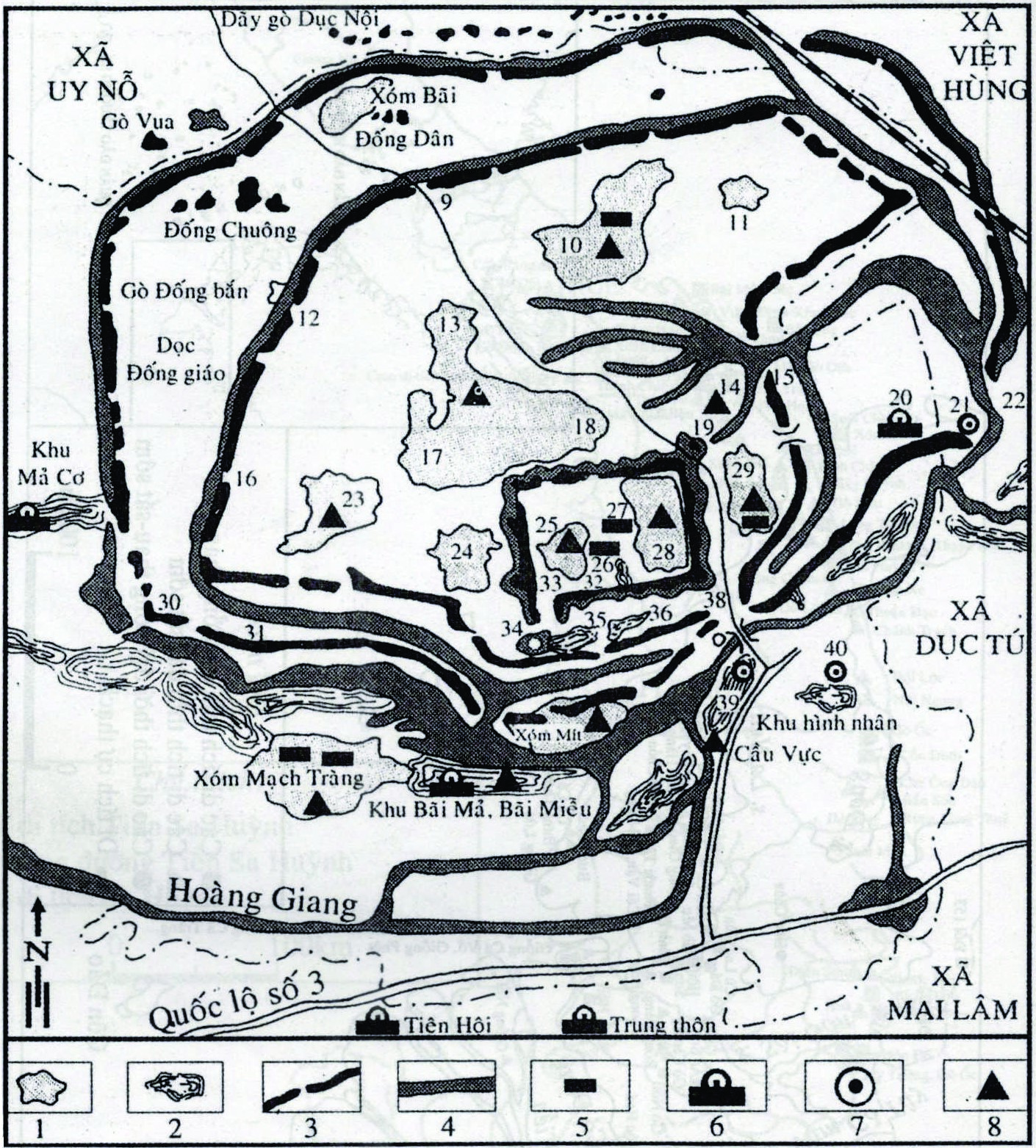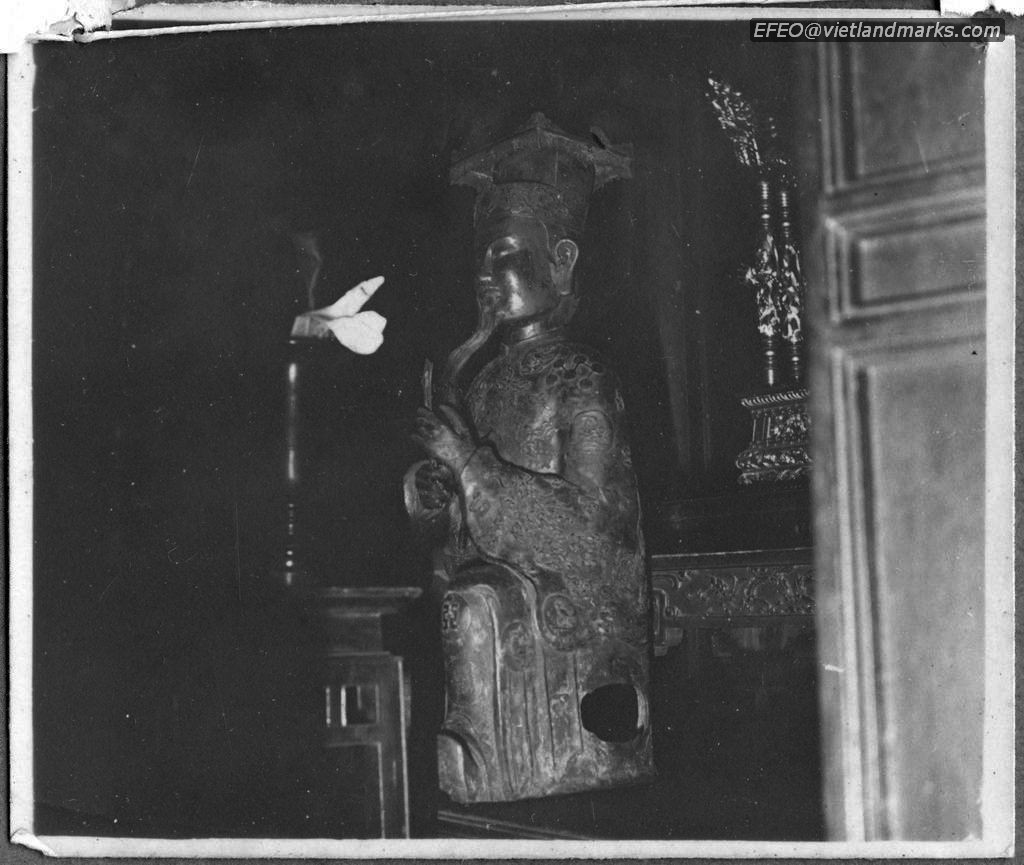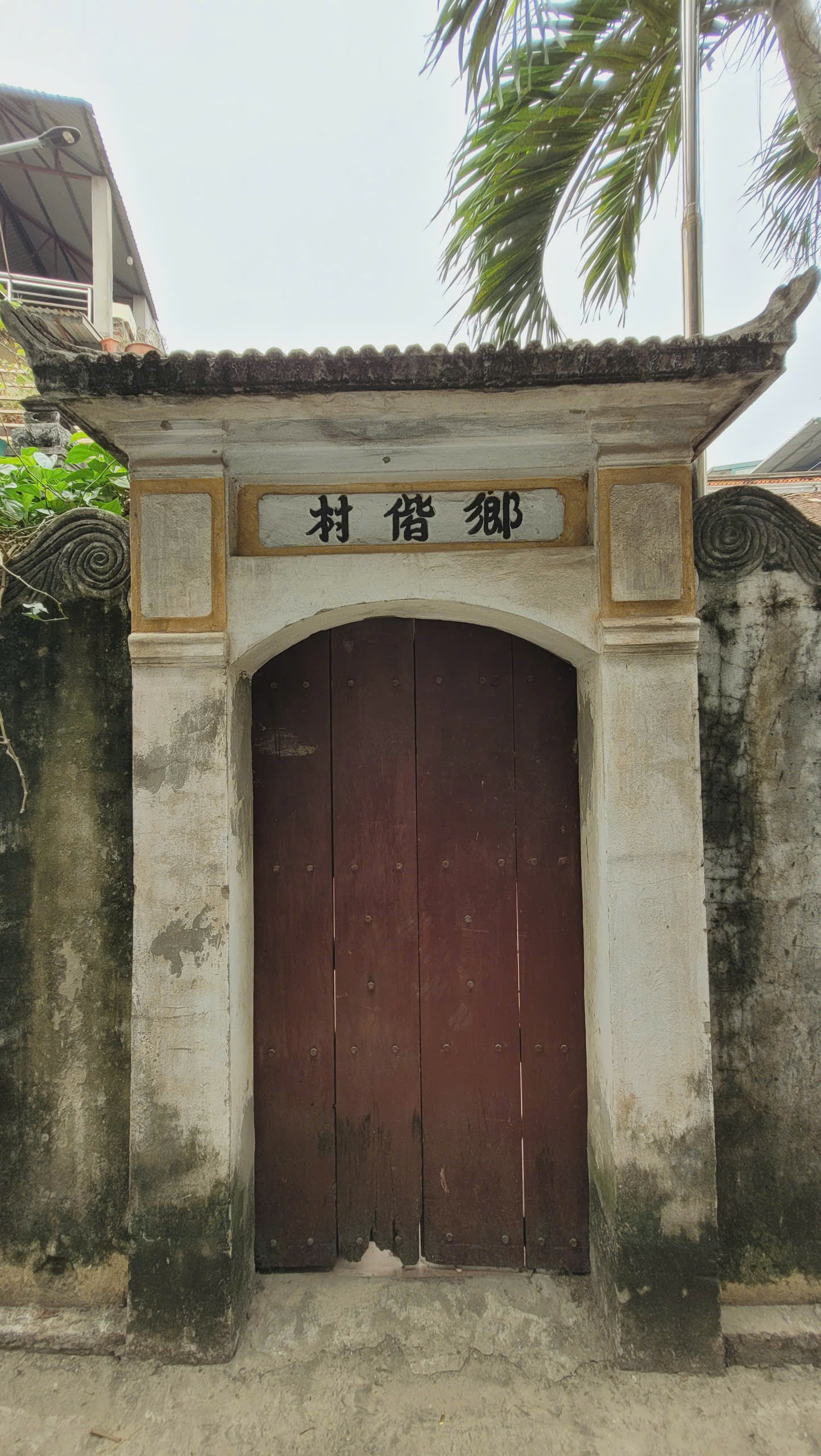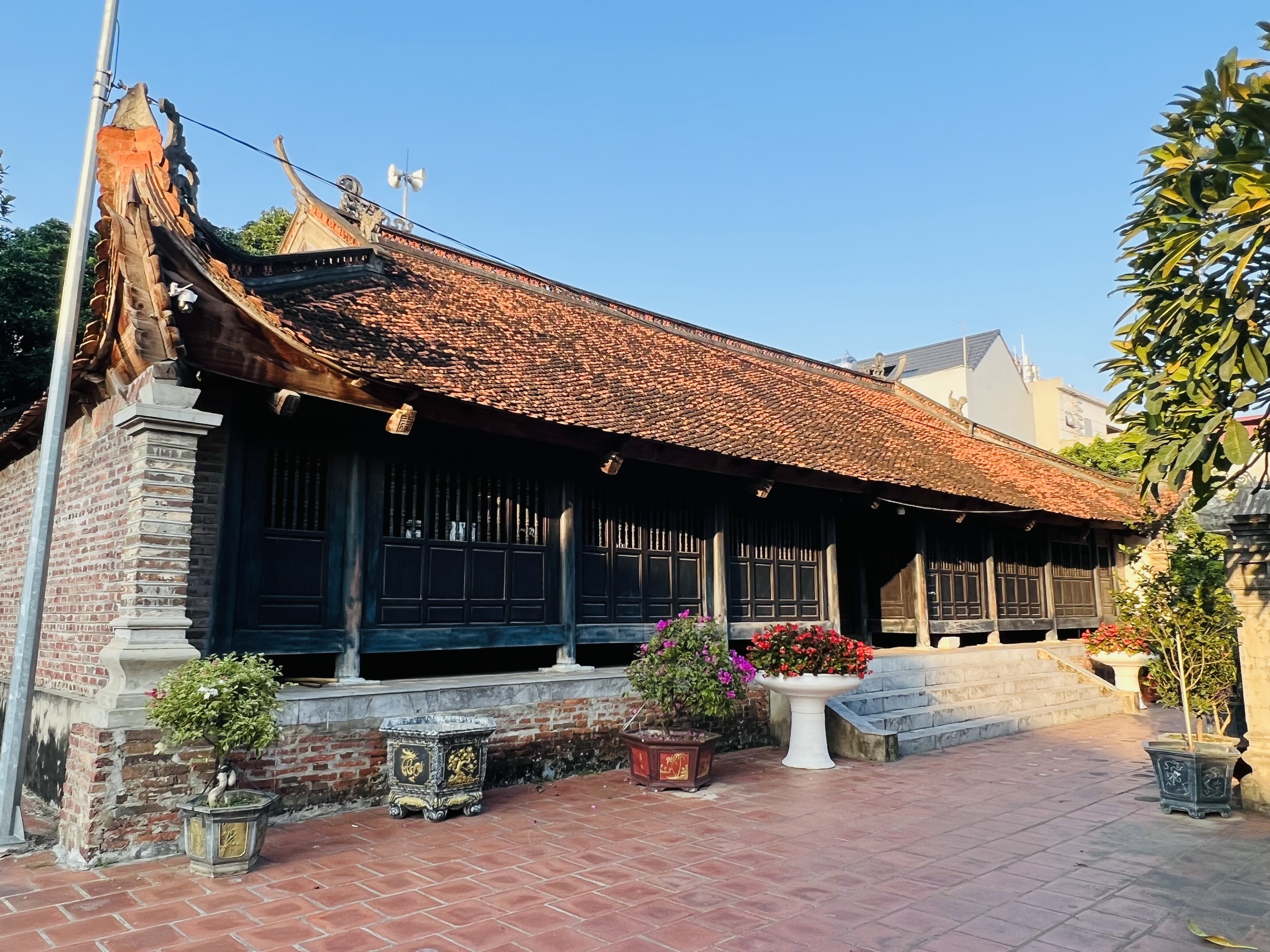On November 15, 2021, the Hanoi People's Committee signed Decision No. 4839/QD-UBND on the recognition of Cổ Loa special national relic tourist site (Co Loa commune, Dong Anh district, Hanoi city). The Thang Long - Hanoi Heritage Conservation Center is responsible for organizing the management, exploitation and development of tourist attractions in accordance with the provisions of the Tourism Law and related legal documents.
Cổ Loa special national relic tourist site has an area of 860.4 ha including Cổ Loa commune and a part of Việt Hùng, Dục Tú, Uy Nỗ communes with many types of tourism products: historical relics - culture, art architecture, archeology, festivals and other cultural values…
Cổ Loa Citadel Relic
Co Loa citadel was built by An Duong Vuong in the 3rd century BC as the capital, the center of power and economy of the Au Lac state. Co Loa citadel was built on a large scale, which is a proof of the high level of military technology of the ancient Vietnamese civilization. Currently, Co Loa citadel consists of 3 closed ramparts, covered with earth with a total length of over 16,000m: The circumference of the Internal rampart, Middle rampart, and External rampart is 1650m, 6500m, 8000m, respectively. All three ramparts are surrounded by moats.
An Dương Vương Temple Relic
An Dương Vương temple, also known as Cổ Loa temple or Thượng temple, was built in the Internal rampart, with an area of 19,138.6 square meters. The main architectural works of the temple are located on the main axis (Dũng đạo) (from the outside to the inside) including: Ngọc (Pearl) Well- Outer ceremonial gate – Inner ceremonial gate - Stele Pavilion – Forecourt - Small square pavilion - Middle Hall - The sanctuary.
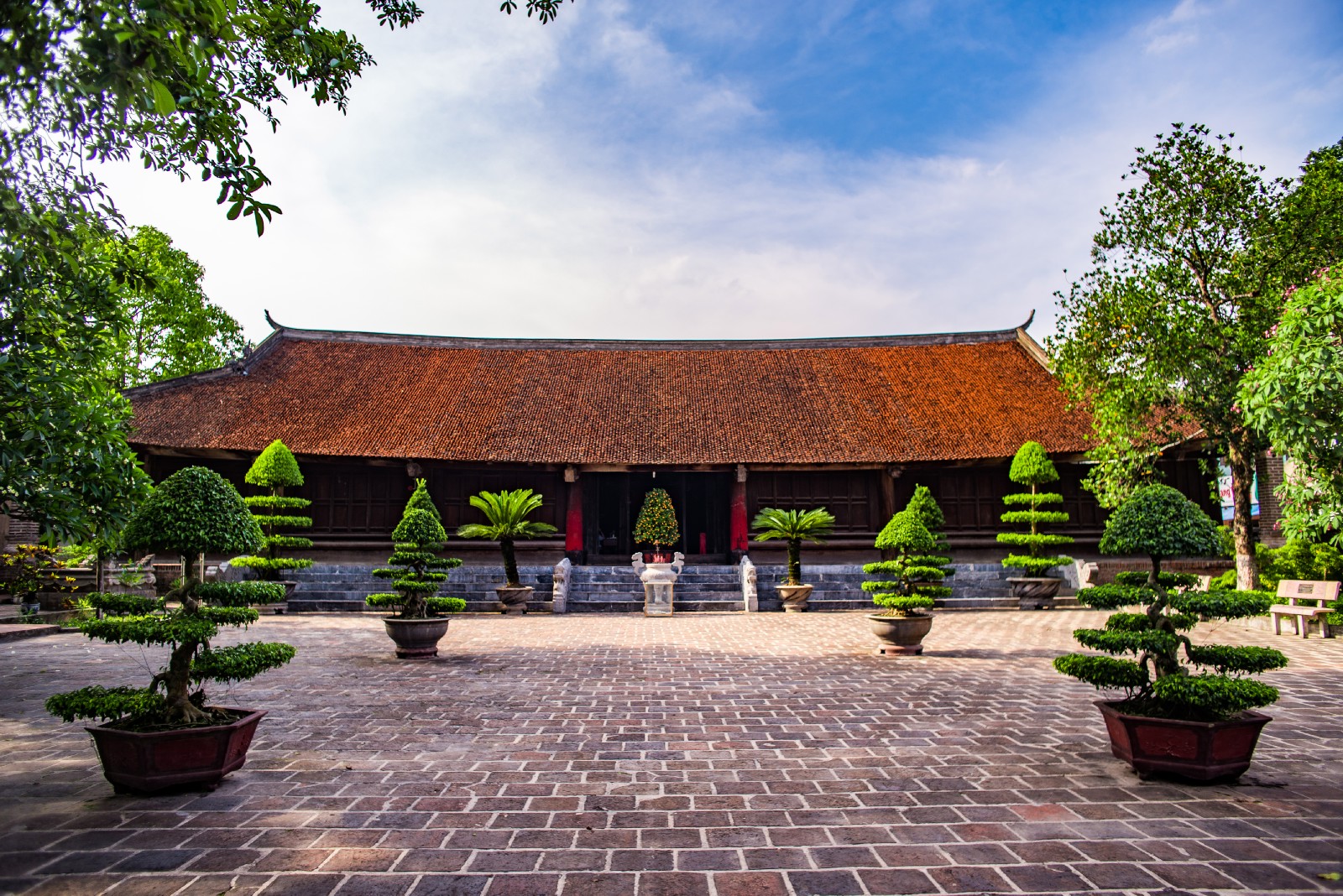 Ngự Triều Di Quy Communal House Relic
Ngự Triều Di Quy Communal House Relic
Ngự Triều Di Quy communal house is also known as Cổ Loa communal house. According to the legend, the place where the communal house was built was the royal palace of An Dương Vương. The communal house worships King An Duong Vuong as a local village’s guardian god, together with his loyal Cao Lỗ - a good general who invented the magic crossbow and heroically fell in the war of safeguarding the Âu Lạc state from forein invason. The communal house has a layout from the outside in: Ceremonial Gate - Dragon yard - Grand Ceremonial Hall and the Sanctuary.
Mỵ Châu Temple Relic
The shrine of Princess My Chau is located on an area of 925.4m2 under the ancient banyan tree, which is said to have been planted by Ngo Quyen when he settled in Co Loa. The small temple has a Chinese word "二" (two) shaped layout, the sanctuary has a Chinese word “丁” shaped, including: “Grand Ceremonial Hall” and sanctuary. Mỵ Châu temple is associated with the legend of the tragic love story of My Chau - Trong Thuy thousands of years ago.
Bảo Sơn Pagoda Relic
Bảo Sơn Pagoda, also known as Cổ Loa Pagoda, is located behind Ngự Triều Di Quy Communal House. The pagoda has an architectural design resembling an insertion of two Chinese characters: Inside is the word “工”, outside is surrounded by a frame like the word “国”. The pagoda has 134 statues dating from the 18th - 19th centuries.
Chùa (Pagoda) Hamlet Điếm
Chua hamlet is one of the 15 ancient “điếm” in Co Loa, a place to worship the local gods, the earth god, the water god and sanctified mandarins and also a venue for communal activities, with architecture style around the XIX - XX centuries. Today, people have worshiped General Cao Lo as the patron god of the people of Chua hamlet.
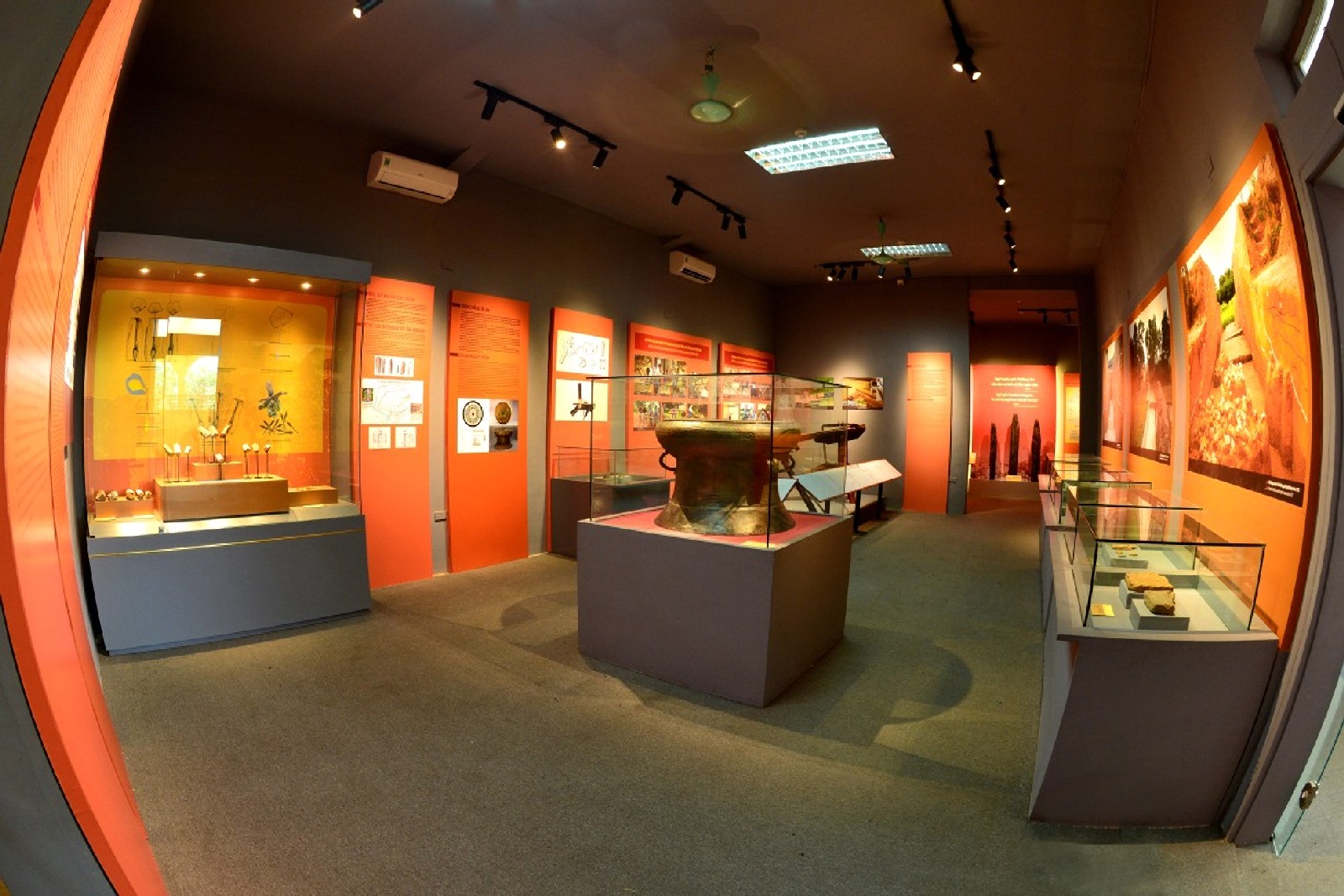 Exhibition House
Exhibition House
The exhibition house introduces about more than 200 documents and artifacts (including many valuable documents, artifacts, and national treasures) according to the historical process from 4000 years to the present at the 2nd floor and 1st floor lobby of the Gallery.
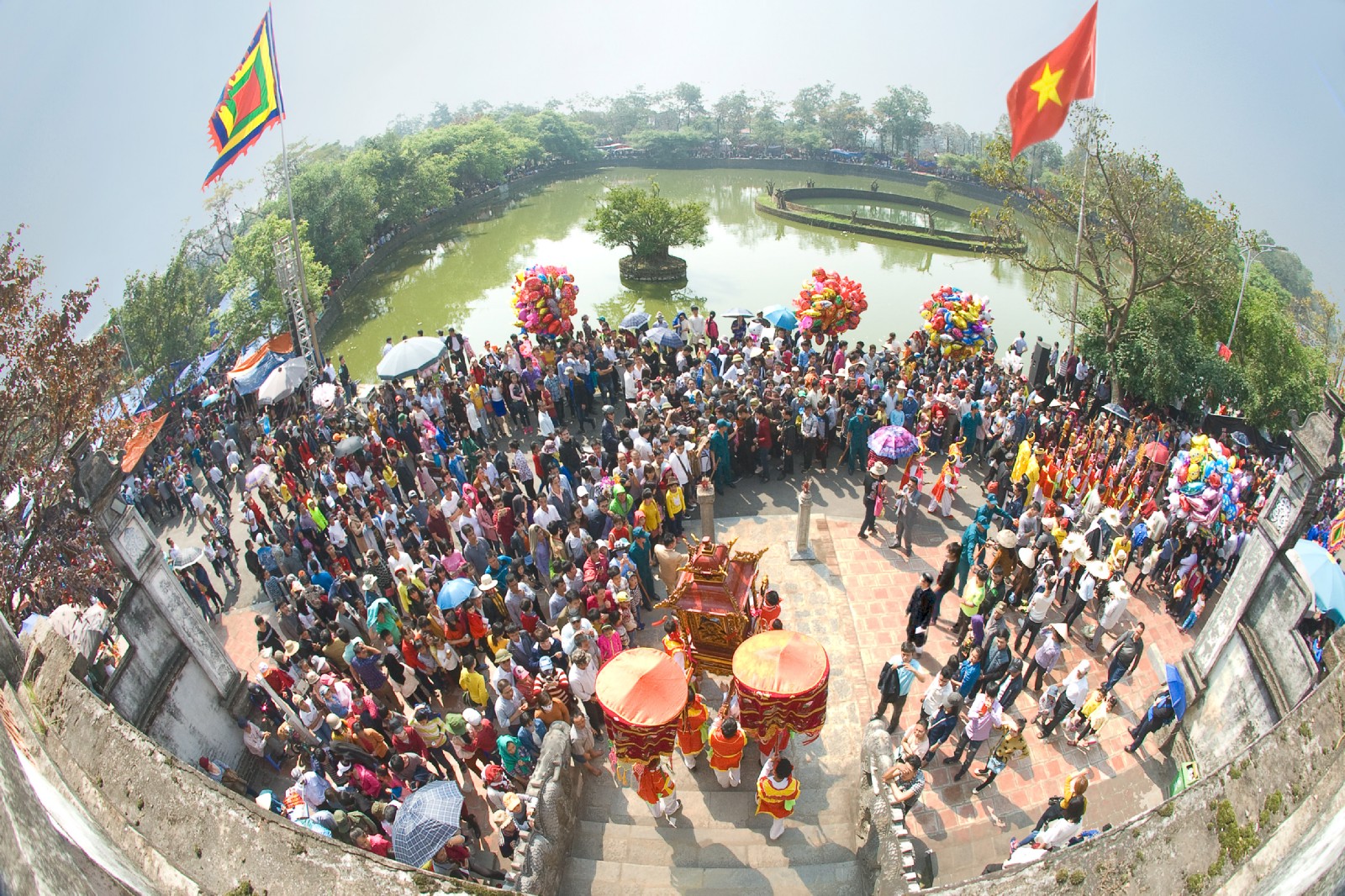 Cổ Loa Festival
Cổ Loa Festival
Cổ Loa Festival, also known as " Bát xã Loa thành " or " Bát xã hộ nhi " Festival, is a common festival of 8 communes to commemorate and honor An Dương Vương, King of Âu Lạc state, who had the Cổ Loa citadel build in an effort to safeguard the Vietnamese nation from foreign invasion in its early history. Legend has it that January 6 (Lunar Calender) is the anniversary of An Dương Vương’s enthronment, and on January 9, he held a feast for all the soldiers. To remember the merits of the king, the villagers of Co Loa and other villages in the region worshiped King An Duong Vuong, taking January 6 as the festival date. Previously, Co Loa festival was held regularly every 3 years to 5 years for 12 days, from the 6th to the 18th of January, if it was the year of " phong đăng hòa cốc ", Co Loa held a very large festival. Currently, Co Loa festival is held in 2 days (January 5 - 6), the 6th is the main day festival. Co Loa festival still preserves many rituals, customs, and folk games of the ancient capital. Co Loa Festival was registered as a National Intangible Cultural Heritage in Decision No. 603/QD-BVHTTDL dated February 3, 2021 of the Ministry of Culture, Sports and Tourism.
With many resources, the Co Loa special national relic tourist site is suitable for developing many tourist products for sightseeing, experience, accommodation, shopping and cuisine. Coming to Co Loa relic site, visitors will feel the spacious natural landscape of Vietnamese villages.
MANAGEMENT DEPARTMENT OF CỔ LOA VESTIGE SITE
